Easy DIY Heated Chicken Waterer (Make in 15 minutes!)
If you’re looking for a reliable, worry-free water source for your flock this winter, this easy do-it-yourself heated chicken waterer is it. Make it in just 10-15 minutes. Use your existing waterer. It’s simple and it works.
Your chickens will love it and you will love not having to worry about frozen water in the dead of winter.
Coming Up With The Design
We live in northern Illinois and can have some pretty extreme winters. I knew I was going to need something reliable and I wanted to be ready for our first winter on our new 5-acre homestead.
So, I went out to my local Farm n Fleet and picked up a heated chicken waterer base for $40. The box told me they wouldn’t guarantee it to work unless you bought their double-walled metal waterer with it. All in, the total was over $100 with tax.
Yikes! I knew I could do better.
So, I returned both items, got my money back, did a little research, and came up with a fool-proof heated chicken waterer DIY project that is super simple.
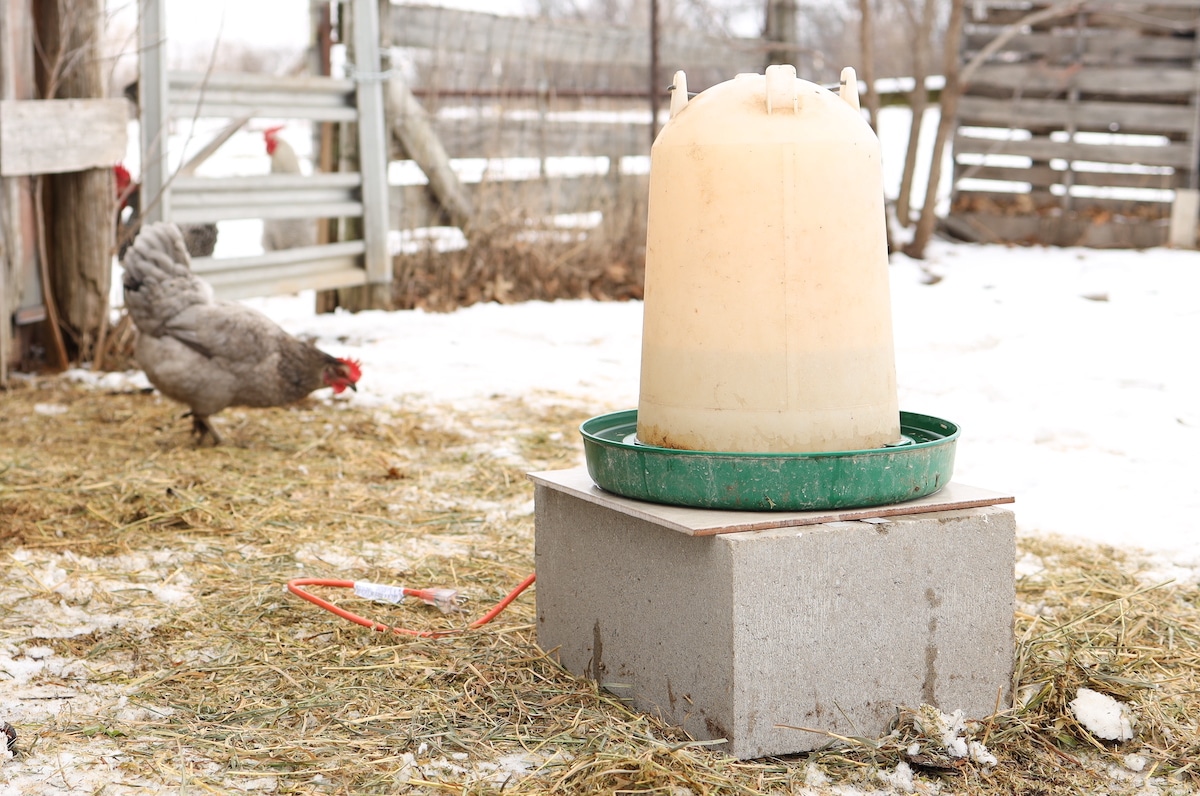
Why I don’t recommend a heated waterer with a light bulb
Back when we lived in the suburbs and kept backyard chickens, I built a different style of heated chicken waterer base that you commonly see. It’s a large cookie tin with a lightbulb socket and incandescent bulb as the heat source inside the tin.
There were a lot of Pros—everyone has an old cookie tin lying around and it’s pretty simple and cheap to rig up a socket for a 40-watt bulb inside of one.
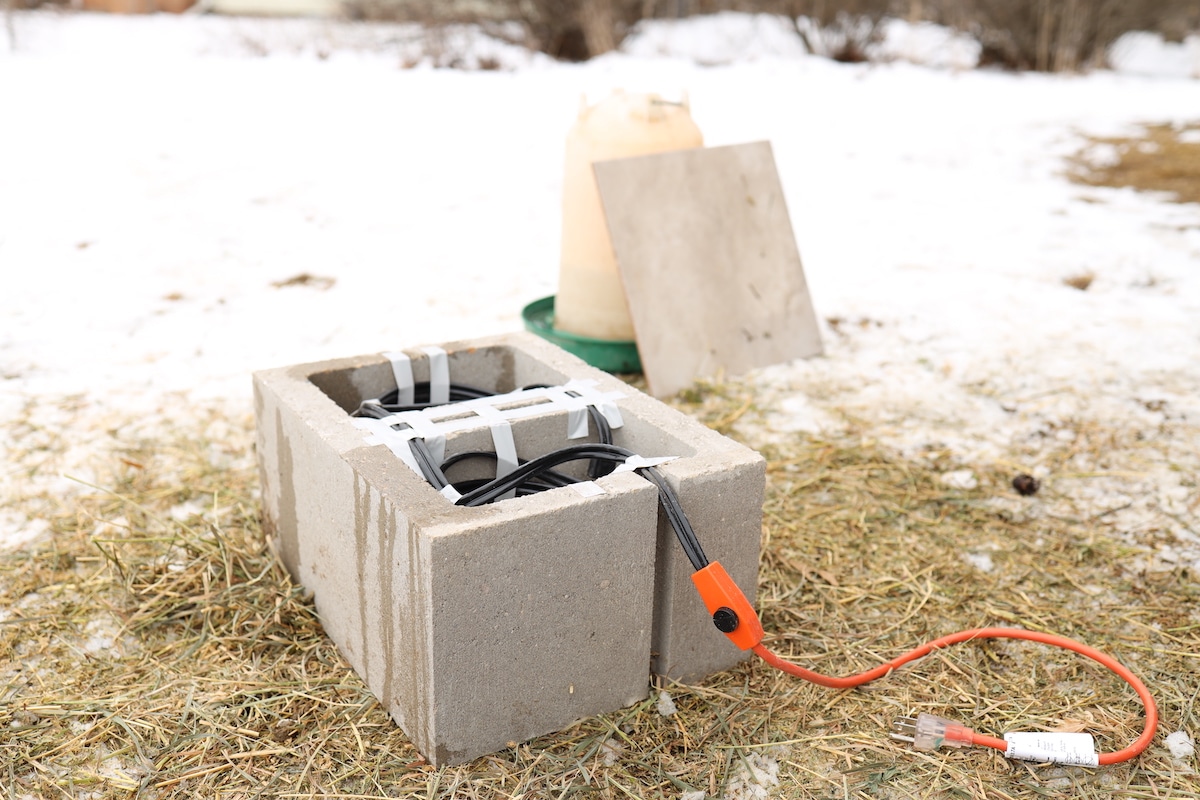
However, what it didn’t account for is moisture. Water spills. Rain and snow. General moisture from chicken doo-doo. Moisture creeps into your cookie tin over time and incandescent bulbs just don’t hold up to moisture. I found myself replacing bulbs monthly, if not weekly.
Climbing into a tight coop in 0-degree weather trying to pop open a frozen cookie tin is not fun! We now have a larger coop in our barn and I needed something our 40+ birds can rely on.
No light bulbs. No aquarium heater and 5-gallon bucket. I just needed a basic design that would work with our existing plastic waterer.
What makes this the best heated chicken waterer design?
First off, it’s easy. If projects aren’t your thing, you CAN build this! The steps are simple, it doesn’t require a lot of tools, and it will only take about 10-15 minutes to build.
I also believe in replaceable parts. If a product or brand doesn’t have replaceable parts for what they sell I generally won’t support it. That’s a big reason why I returned the waterer from the store. When the heating element goes bad, which it will, I don’t like the idea of tossing the entire thing and starting over when only one part went bad.
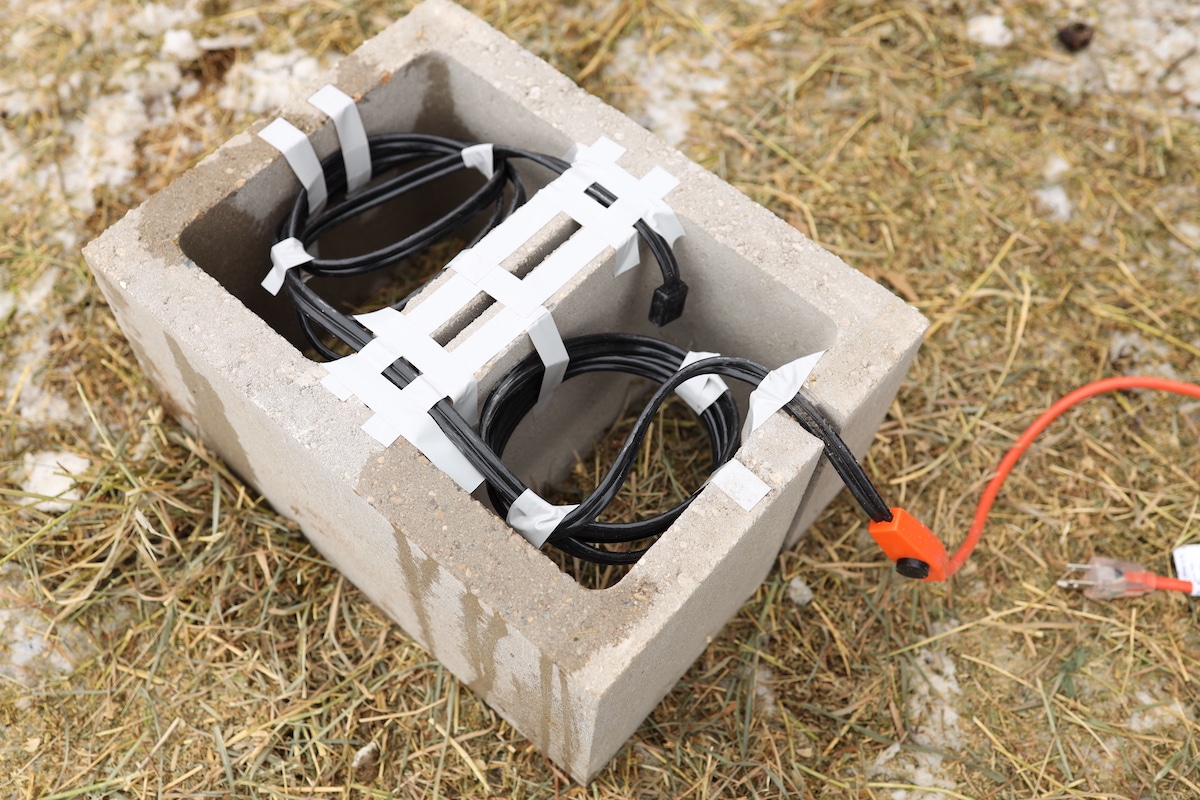
Plus, you can use your existing waterer! As long as your base is big enough to fit your waterer on top, your chicken’s water will stay thawed.
This heated chicken waterer base will cost less than $35 and I use very basic, readily available materials that can all be swapped out quickly and easily.
What I Used To Build The Heated Base
12’ Electric Heat Cable (~$28) – These flexible heat elements can be found in the plumbing department of your local hardware store and are relatively affordable, or buy it here. This one came with a built-in thermostat. The thermostat turns on the heating element automatically when there is a risk of water freezing. This is a fantastic feature so you don’t need to worry about wasting energy or turning your waterer on and off constantly. A 12’ cable has worked fine inside our coop here in northern Illinois, but if you need more heat, simply get a longer heat cable for only a few dollars more.
Note: This installation does go against the manufacturer’s recommended installation guidelines to not have the heat cable coiled or touching itself. I have not had issues with the cable overheating but you should read the instructions yourself before making. This alternative heat cable ensures it will not short or burn out when overlapped, but it does not have a built-in thermostat.
Concrete Block (~$2) – I used a 12” x 16” concrete block (or CMU) that is 8” high. You want a sturdy base under your waterer and something heavy enough that your chickens won’t knock over. Concrete is also a great insulator, so it traps a lot of heat within the hollow chambers of the block. I did purchase this one but I am also a big fan of reusing, and concrete blocks are something you can almost always find for free on Craigslist or Marketplace.
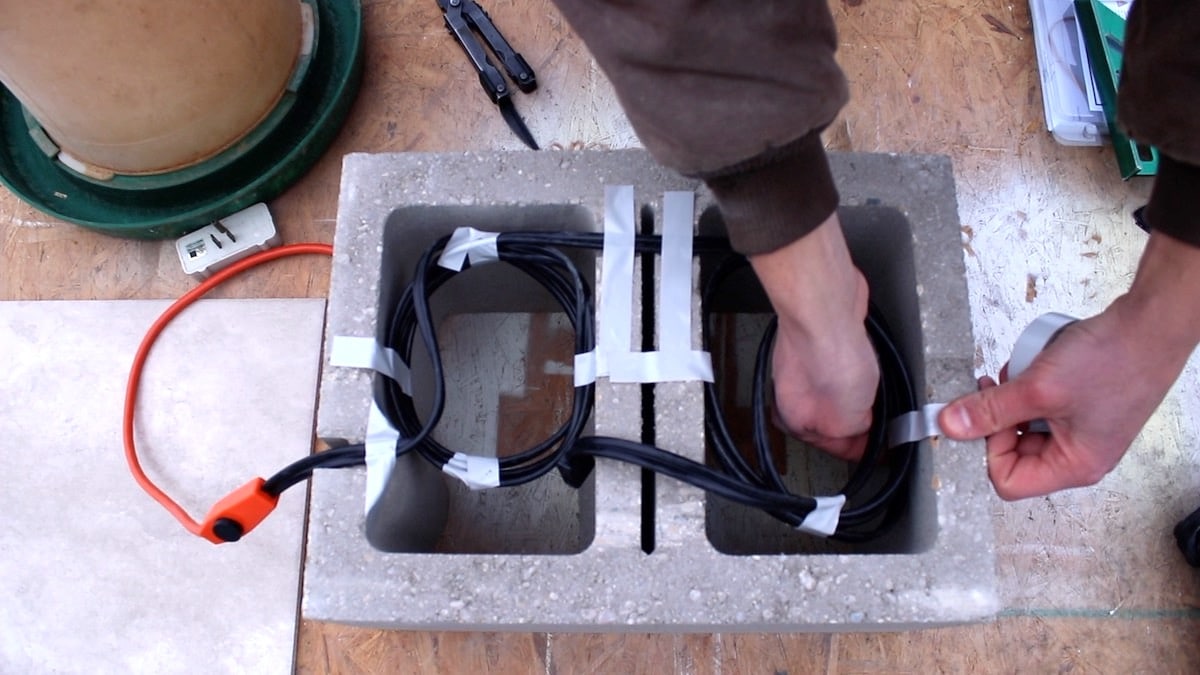
Tile (~$1) – I used one, 13-1/2” x 13-1/2” flooring tile. Your tile needs to accomplish two things: 1) Be large enough to fully cover the chambers of the concrete block to trap heat, and 2) Be thin enough to effectively transfer heat. They sell thin concrete blocks that would have fit nicely and certainly been more robust. But they are over an inch thick and I wasn’t sure heat would transfer well through them. Go with the tile. Mine has held up well and always stays plenty warm.
Electrical Tape (or Duct Tape) – You probably already have some on hand. But if not, pick up a roll of electrical tape or duct tape.
Extension Cord – If you don’t have a power supply in your coop, grab a spare extension cord and run it to your coop.
Thermostat Alternative – Some heat tapes don’t come with a built-in thermostat. In this case, you can buy a super handy plug called a Thermo Cube which has the same effect. In fact, going this route would probably have been my preference if my local hardware store carried just a basic heat cable. It’s cheaper to buy one without a thermostat and generally, it’s the electric heating element that goes bad over time and not the thermostat.
Tools List:
– Angle Grinder w/ Masonry Grinding Blade (or a hammer and masonry chisel)
– Safety Glasses
– Scissors or Knife (for cutting electrical tape)
– Pencil
Step-by-step Guide to Building Your Heated Waterer Base
Step One
Mark out where you want your heat cable to enter the block. With an angle grinder and masonry grinding blade (wear safety glasses while using), grind a notch at your mark large enough for the heat tape to sit in so the tile can lay flush on top of the block. Next, make two similar notches on top of the center divider between the two chambers. These notches allow your heat cable to transfer from one chamber to the other and also help hold the heat tape in place.
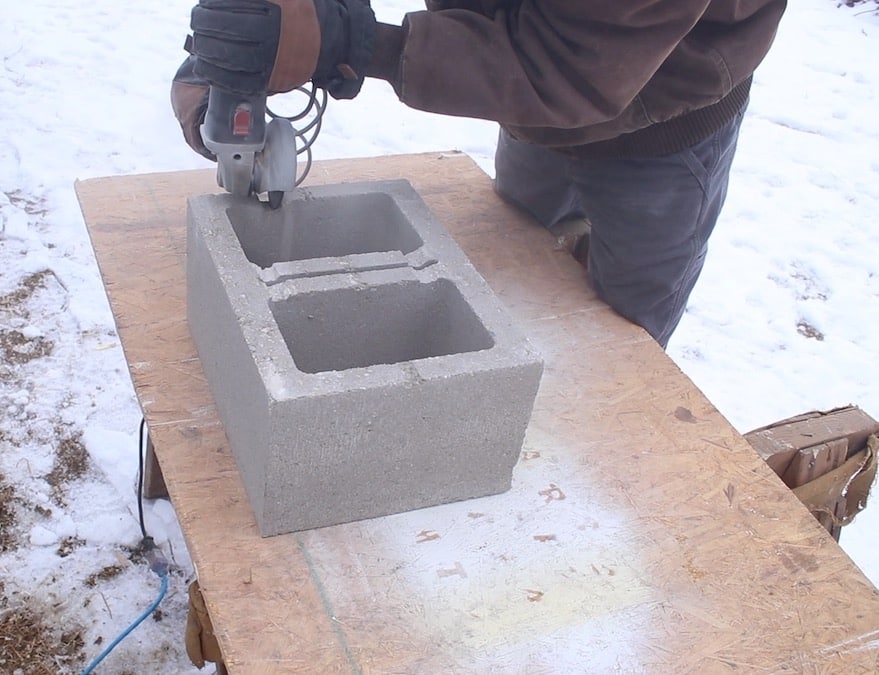
Note – If you don’t have an angle grinder, no worries! Grab a hammer and a chisel and you can chisel out notches. It might take a little extra time and not be as precise, but your chickens will never know the difference!
Step Two
Run your heat cable through the entry notch and tape it in place. Make sure the thermostat hangs outside the block about 6-8” so that it can get accurate readings. Coil up about half the tape in the first chamber and tape the coil so it holds together. Then tape it to the block so it stays near the top. Bring your heat cable to the other chamber through one of your center notches, coil up and tape the rest. I left a tail at the end of the second coil to bring through my second center notch. Apply as much tape as needed at the end to hold it all in place.

Step Three
Place the block in your chicken coop where you want it and make sure it is level.
Step Four
Plug in the tape, put your tile on top making sure the chambers of the block are fully covered, and place your chicken waterer on top.

That’s it!
We couldn’t be happier with the results. Our diy waterer has now lasted us four winters. Even during multiple days of sub-zero temperatures during the winter months, we’ve woken up to unfrozen, fresh water for our ladies to drink from.
What to do IF water does freeze?
During times of extended extreme cold weather, you may find the frozen water in the trough or chamber of your waterer. In that case, here’s what I do:
1. Check it often. When you stay on top of it, it’s easy to remove any ice to keep water flowing.
2. Chip out ice. Most often ice will start to form in the trough part of your waterer. I have a garden weeding tool with an angled metal hook. This works perfectly to chip away ice.
3. Bring it inside. If ice has built up to the point where it’s no longer flowing, bring your waterer inside, run it under warm water to thaw, re-fill, and your chickens have clean water again!
We’re excited to hear what you think in the comments below and let us know if you have questions.
Some of the above links are affiliate links. This means we earn a small commission on qualifying purchases at no cost to you.
Want more helpful tips for your backyard flock?
- How To Care For Chickens In The Winter Basics
- Breaking Down The Cost of Chickens For Eggs
- What Should Be Inside A Chicken Coop – Easy Guide!
- Predator Proof Chicken Coop Essentials
- How To Care For Baby Chicks
- Simple Outdoor Chicken Brooder Ideas
- Chicken Roost Designs | Two Simple DIY Ladder Perch Ideas
- Custom A-Frame Chicken Tractor For (Almost) Free
Pin it for later!
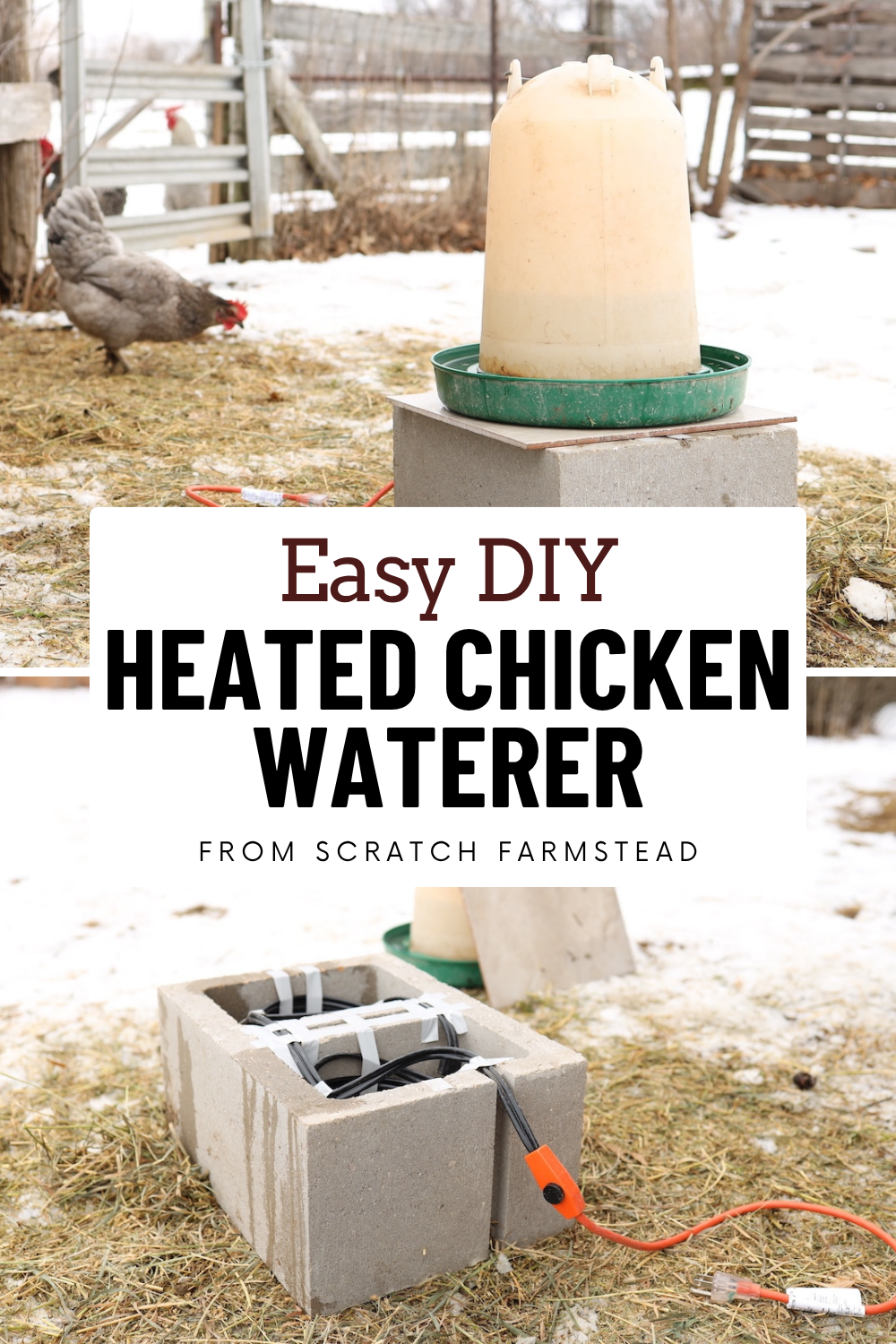


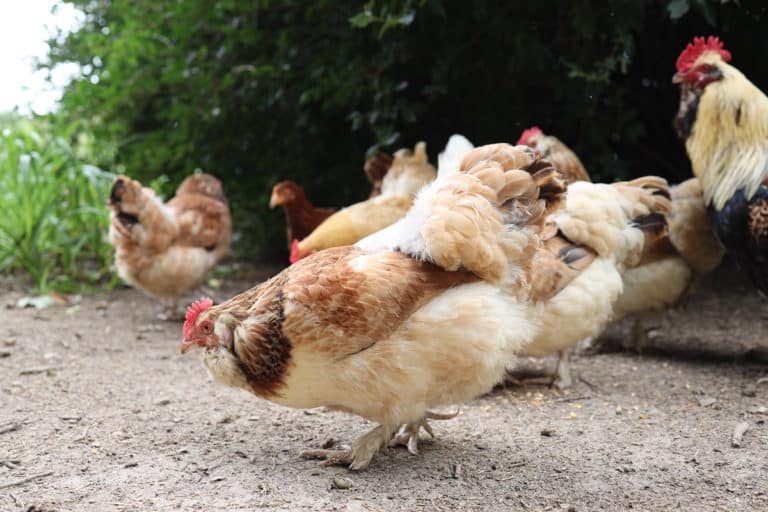

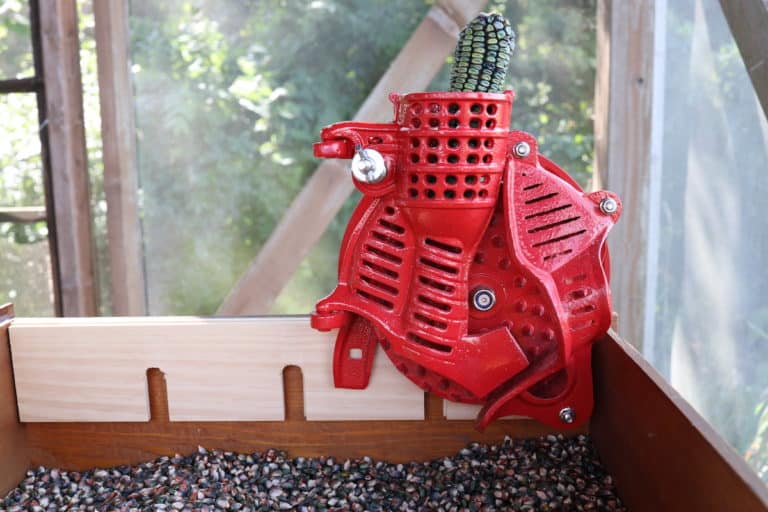

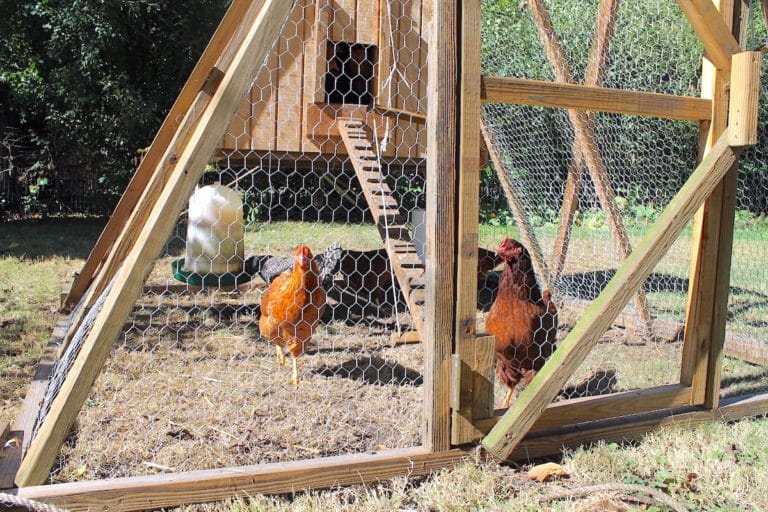
thanks i didnt trust the light bulb, this is so much better and safer
Yes! Thanks for stopping by and happy chicken raising!
This sounds practical and really ideal for our setup in NC. We have frequent nights in the teens, and this will be our first winter. Newbies. I might add a dab of silicone between the tile and block to keep the heat in and moisture out but that is our Wx here…cold rain and ice.
Thanks for the comment! I think sealing between the block and tile makes a lot of sense. Good luck with the first winter!
Is this plugged into 120v household ? Or some battery . It looks like in one of the pics it needs to be plugged into the home or??
We have electric run to our barn so it’s just plugged into a standard household outlet. If your coop is more remote you can either run an extension cord out there or I’m sure there is a way to run it off a battery. I’m just not super familiar with how. Hope that helps!
So glad I found this! Its our first year with our girls and when we woke up (Minnesota family, here) yesterday morning there was a thin layer of ice on our waterer. I knew I needed to find a winter waterer – so glad this option popped up!! Love your blog – it’s right up our alley!
Yikes! Gives me chills just thinking about winter up in MN! Hope the first winter goes smoothly for you and your your ladies :). Thanks for stopping by and take care!
This a wonderful option, we just had our first snow here in Colorado so this might do the trick. I see you have your water inside the laying pen, how does it work outside in the run or free range in the weather?
Might have a few more queries from my husband as he will be constructing it. Thank you!
Hey there! Yes, ours is inside our barn which helps keep it from freezing. In an open coop or run I would make sure you have a good windbreak around it to cut down on drafts as much as possible and insulate the coop/run a bit. The cold wind and drafts will be one of the main reasons water will freeze. We have another post on keeping chickens in the winter that talks about ways to cut down drafts: http://fromscratchfarmstead.com/how-to-care-for-chickens-in-the-winter-basics/. If you have really cold temps you might have to chip out a bit of ice from your waterer on occasion. Hope that helps and don’t hesitate with any other questions! Thanks!
This was awesome. Thank you
Great! Glad it was helpful ????
Luv this invention. What about younger chickens that aren’t tall enough to reach the water? This seems fine for adults.
Great question! One option is to either bury the block down in the ground a bit or mound up around it so the chicks can get access. You could also use something like bricks or blocks around it that could act as a stair. Even when we introduced our young pullets into the coop they had no issue reaching ours. But baby chicks would be different for sure. Hope that helps!
I like this idea! Our low- tech solution is having two waterers. When one freezes, it gets brought inside our basement to thaw and we swap them out as needed.
Nice! Sometimes low tech is the way to go.
Great Idea. I just recently built myself a chicken coop outside my barn with a large attached chicken yard at the time not thinking of winter. OMG how I let that slip my mind having lived here in the frozen north for 70 years. My coop and attached yard is pretty good sized and has a raised floor so I cant move it into my barn. If it doesn’t work out I can move my girls into the barn into one of the stalls and use a small coop in there. Either way it gets extreme here in North Idaho in the winter often times were below zero for a couple weeks at a time. I used a similar idea for my horses water troughs. Wrapping the heat tape around the metal water trough then putting them inside a tractor tire. Works great and saves me money. A regular tank heater for my horses raises my electric bill about $100 a month in the winter and the heat tapes don’t cost hardly anything at all.
Thanks for this comment! Forgetting to plan for winter is unfortunately way too easy to do! It might take a winter or so to figure it out, but I’m sure you’ll be able to come up with a plan to keep your girls nice and cozy through the winter. Having a barn stall as an option is nice! And love the reminder about energy costs! You really hardly notice the heat tape when the bill shows up.
Great idea!! Just put mine together but I filled the concrete block holes with rocks almost to the top and then put the wire on top and placed the tile. Hoping the rocks will help retain the heat.
Love that idea! That should definitely help to retain and radiate more heat. I like that it also keeps the heat tape nearer to the top. Hope it works great for you!
I was thinking the same thing, but using sand. It will transfer heat better than air and also act as a heat sink to keep it steady temp.
That sounds like a great improvement! Might try the same on ours!
THATS A FIRE STARTER That HEAT TAPE SHOULD NOT BE TOUCHING ITSELF AT ALL NOT SAFE I DON’T RECOMMEND
Appreciate you sharing your concern! That’s why I give an alternative heat tape in the post that is designed to touch itself by the manufacturer. I share the method I used with common supplies from the hardware store, but I recommend everyone do what they are comfortable with and feel is safe for their setup. That said, after 3 years this heater base is still going strong for us with no issues of overheating. Thanks again!
I tried your water heater with the cement block and pipe heater. Works great so far. (-7 C) I added some insulation to the lower part of the block help focus some of the heat upwards. We shall see how it does in our the colder winters here in Ottawa, Canada. Nicest part….I had everything so very inexpensive adaptation. Thank you for the idea.
Awesome, glad it was helpful! Hope it continues to work, I bet you get some cold winters up there!